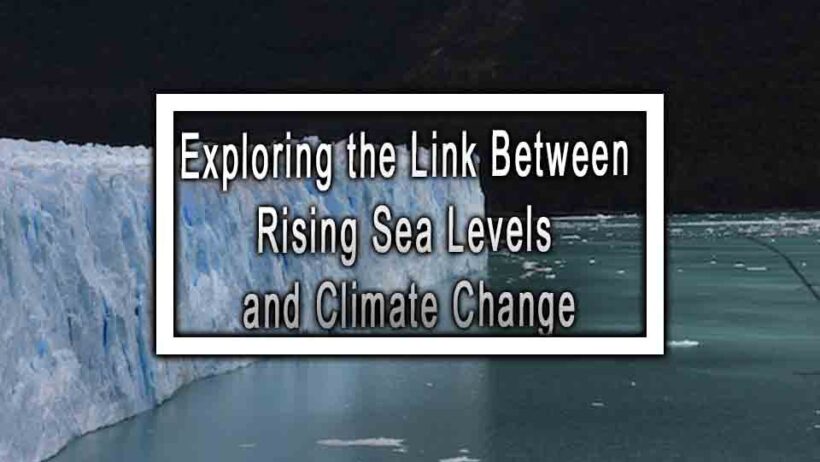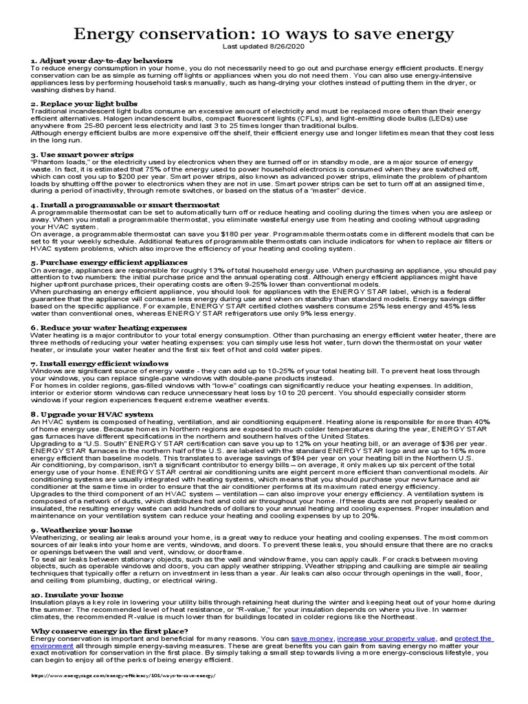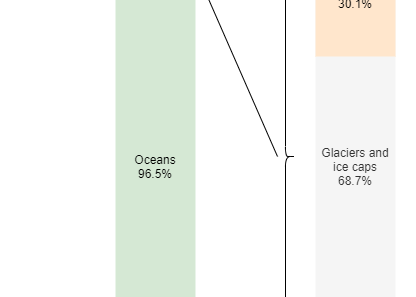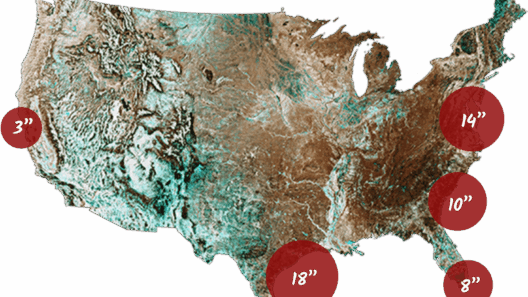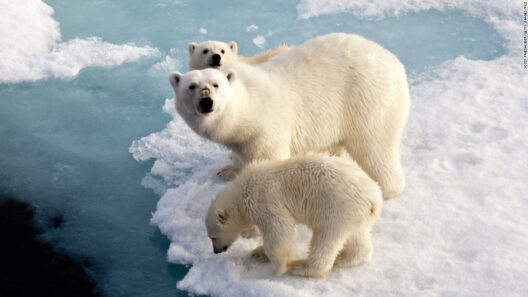As the oceans embrace the shorelines of our world, an existential dilemma unfurls before humanity: why are sea levels rising? This issue isn’t merely a statistic; it reflects the intricate symphony of environmental changes that resonate through the atmosphere, ice caps, and the very ecosystems of our planet. Understanding the forces behind rising sea levels is not just an academic pursuit; it is a clarion call for sustainable practices and a collective effort to mitigate impending crises. In this discourse, we will delve into the complexities of this phenomenon, exploring both natural and anthropogenic contributors.
Climate Change: The Catalyst of Transformation
The most prominent driver of rising sea levels is climate change, an overarching force reshaping our planet. This transformation is propelled by greenhouse gas emissions, the main culprits being carbon dioxide (CO2) and methane (CH4). As these gases accumulate in the atmosphere due to human activities—such as deforestation, fossil fuel combustion, and industrial processes—they trap heat, leading to global warming.
This warming influences sea levels in two major ways: thermal expansion of seawater and the melting of glaciers and ice sheets. The former occurs as water heats up, causing it to expand. It’s a simple yet profound principle of physics, manifesting in tangible consequences. The latter involves sizable ice formations—the Greenland and Antarctic ice sheets—shedding immense quantities of water into the oceans. This duality of expansion and melting composes a significant portion of the current sea-level rise.
Thermal Expansion: The Hidden Force of Oceanic Change
Delving deeper into thermal expansion reveals its insidious impact. As global temperatures rise, oceans absorb about 90% of this excess heat, languishing in a state of latent transition. This process, often overlooked, subtly elevates sea levels and alters marine ecosystems. Warmer waters affect ocean currents, disrupt weather patterns, and even contribute to more severe storms, creating a vicious cycle of environmental degradation.
Understanding the nuances of thermal expansion is crucial. It doesn’t just affect coastal cities; it reshapes entire habitats, threatening delicate marine organisms that rely on stable temperature ranges. Coral reefs, for example, suffer from bleaching and increased mortality rates, which subsequently influence global biodiversity and fisheries that millions rely upon for their livelihood.
Melting Glaciers and Ice Sheets: Unraveling the Frozen Giants
The melting of glaciers and ice sheets stands as another pivotal aspect of rising sea levels, emphasizing the urgency of climate action. The Greenland and Antarctic ice sheets serve as colossal reservoirs of freshwater. As temperatures continue to rise, these ice giants are succumbing to melt rates previously deemed unfathomable.
In Greenland, accelerated melting has led to profound concerns about the stability of the ice sheet, with implications extending beyond regional boundaries. The influx of freshwater alters salinity levels, affecting ocean circulation patterns crucial for global climate regulation. The Antarctic, often perceived as a distant land of ice, is now not only a barometer of climate change but also a harbinger of potential upheaval. Predictions suggest that if current trends continue unchecked, entire coastal cities could be submerged, necessitating large-scale relocations and socio-economic upheaval.
The Role of Natural Phenomena: A Complicated Interplay
While human activities are largely responsible for recent trends, natural phenomena, too, play a role in fluctuating sea levels. Events like volcanic eruptions or tectonic shifts can alter coastline topographies, albeit on a localized scale. The El Niño and La Niña phenomena bring variability to ocean temperatures and currents, influencing sea levels intermittently. Such cycles can yield temporary spikes or drops, but they do not negate the long-term upward trajectory fostered by climate change.
The interplay between these natural events and anthropogenic factors creates a labyrinthine web of cause and effect, complicating predictions for future sea-level scenarios. This complexity necessitates a multi-faceted approach to addressing and mitigating climate change, as strategies that overlook inherent natural variability risk failing in their objectives.
Socio-Economic Implications: The Human Cost of Rising Tides
As sea levels continue to ascend, the socio-economic ramifications become painfully apparent. Coastal cities like Miami, New York, and Jakarta face unprecedented threats. Infrastructure must adapt or risk catastrophic failure. The expenses associated with fortification projects, land reclamation, and disaster preparedness seem staggering yet necessary. Additionally, the displacement of populations from vulnerable zones creates a refugee crisis, propelling thousands into instability.
Conversely, wealthier nations may possess the resources to combat these challenges, while developing regions may struggle. This disparity reflects a fundamental issue of equity and justice in climate resilience. Collaborative international efforts are crucial to foster innovative solutions and support vulnerable communities facing existential threats as sea levels rise.
Confronting the Challenge: A Call to Action
Embarking on this journey to understand why sea levels are rising reveals the urgent need for unified action against climate change. The driving forces behind rising oceans are multifaceted; the intersecting threads of human activity and natural phenomena converge to form a complex tapestry of change. Spotlighting these challenges illuminates potential pathways for restoration and sustainability.
As stewards of this planet, embracing renewable energy sources, enhancing waste management practices, and instigating reforestation initiatives can thereby mitigate some effects already set in motion. Public awareness and advocacy are critical components in this fight. Only by collectively engaging society can we hope to inspire meaningful change and ensure the protection of our coastlines for generations to come.
The spectacle of rising sea levels serves as both a warning and an invitation—a profound challenge that calls upon us to rethink our relationship with the Earth. The time to act is now. The fate of our coasts and the health of our planet ultimately lie in our hands.



